Zubin Jacob
Overcoming the Rayleigh limit in extremely low SNR
Oct 16, 2023Abstract:Overcoming the diffraction limit and addressing low Signal-to-Noise Ratio (SNR) scenarios have posed significant challenges to optical imaging systems in applications such as medical diagnosis, remote sensing, and astronomical observations. In this study, we introduce a novel Stochastic Sub-Rayleigh Imaging (SSRI) algorithm capable of localizing point sources and estimating their positions, brightness, and number in low SNR conditions and within the diffraction limit. The SSRI algorithm utilizes conventional imaging devices, facilitating practical and adaptable solutions for real-world applications. Through extensive experimentation, we demonstrate that our proposed method outperforms established algorithms, such as Richardson-Lucy deconvolution and CLEAN, in various challenging scenarios, including extremely low SNR conditions and large relative brightness ratios. We achieved between 40% and 80% success rate in estimating the number of point sources in experimental images with SNR less than 1.2 and sub-Rayleigh separations, with mean position errors less than 2.5 pixels. In the same conditions, the Richardson-Lucy and CLEAN algorithms correctly estimated the number of sources between 0% and 10% of the time, with mean position errors greater than 5 pixels. Notably, SSRI consistently performs well even in the sub-Rayleigh region, offering a benchmark for assessing future quantum superresolution techniques. In conclusion, the SSRI algorithm presents a significant advance in overcoming diffraction limitations in optical imaging systems, particularly under low SNR conditions, with potential widespread impact across multiple fields like biomedical microscopy and astronomical imaging.
Why is thermal imaging textureless
Jul 28, 2023Abstract:Thermal imaging can enable night vision but is usually textureless, well-known as the ghosting effect. The mechanism of this ghosting effect has recently been explained, and TeX vision has been proposed to overcome the ghosting effect. However, it is still unknown for realistic scenarios with non-uniform temperature whether TeX vision can correctly recover geometric textures and how its performance is compared with traditional thermal imaging. Here, we focus on the interplay of geometric textures and non-uniform temperature which is common in realistic thermal imaging, and demonstrate the failure of traditional approaches while TeX vision successfully recovers geometric textures. We also analyze important yet unexplored aspects of the TeX vision theory, and demonstrate a true night vision like broad daylight with the experimentally more feasible Bayer-filter setup. This deepens the understanding of the ghosting effect and bridges the gap between the TeX vision theory and the consumer thermal-imaging market.
Tensor Ring Parametrized Variational Quantum Circuits for Large Scale Quantum Machine Learning
Jan 21, 2022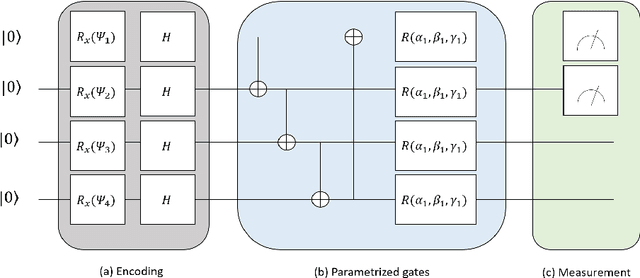
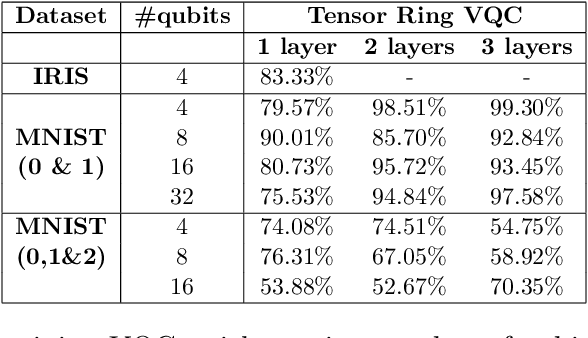


Abstract:Quantum Machine Learning (QML) is an emerging research area advocating the use of quantum computing for advancement in machine learning. Since the discovery of the capability of Parametrized Variational Quantum Circuits (VQC) to replace Artificial Neural Networks, they have been widely adopted to different tasks in Quantum Machine Learning. However, despite their potential to outperform neural networks, VQCs are limited to small scale applications given the challenges in scalability of quantum circuits. To address this shortcoming, we propose an algorithm that compresses the quantum state within the circuit using a tensor ring representation. Using the input qubit state in the tensor ring representation, single qubit gates maintain the tensor ring representation. However, the same is not true for two qubit gates in general, where an approximation is used to have the output as a tensor ring representation. Using this approximation, the storage and computational time increases linearly in the number of qubits and number of layers, as compared to the exponential increase with exact simulation algorithms. This approximation is used to implement the tensor ring VQC. The training of the parameters of tensor ring VQC is performed using a gradient descent based algorithm, where efficient approaches for backpropagation are used. The proposed approach is evaluated on two datasets: Iris and MNIST for the classification task to show the improved accuracy using more number of qubits. We achieve a test accuracy of 83.33\% on Iris dataset and a maximum of 99.30\% and 76.31\% on binary and ternary classification of MNIST dataset using various circuit architectures. The results from the IRIS dataset outperform the results on VQC implemented on Qiskit, and being scalable, demonstrates the potential for VQCs to be used for large scale Quantum Machine Learning applications.
Learning Circular Hidden Quantum Markov Models: A Tensor Network Approach
Oct 29, 2021
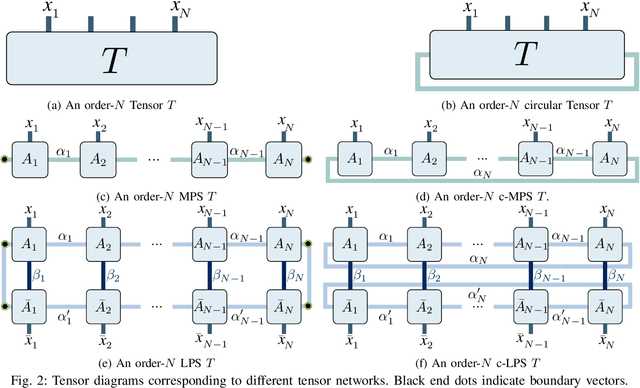

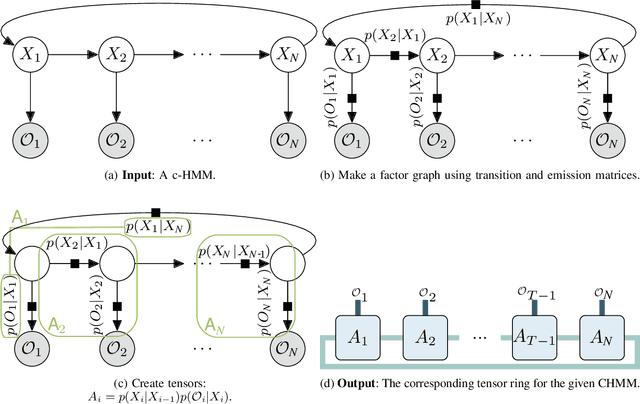
Abstract:In this paper, we propose circular Hidden Quantum Markov Models (c-HQMMs), which can be applied for modeling temporal data in quantum datasets (with classical datasets as a special case). We show that c-HQMMs are equivalent to a constrained tensor network (more precisely, circular Local Purified State with positive-semidefinite decomposition) model. This equivalence enables us to provide an efficient learning model for c-HQMMs. The proposed learning approach is evaluated on six real datasets and demonstrates the advantage of c-HQMMs on multiple datasets as compared to HQMMs, circular HMMs, and HMMs.
Quantum Causal Inference in the Presence of Hidden Common Causes: an Entropic Approach
Apr 24, 2021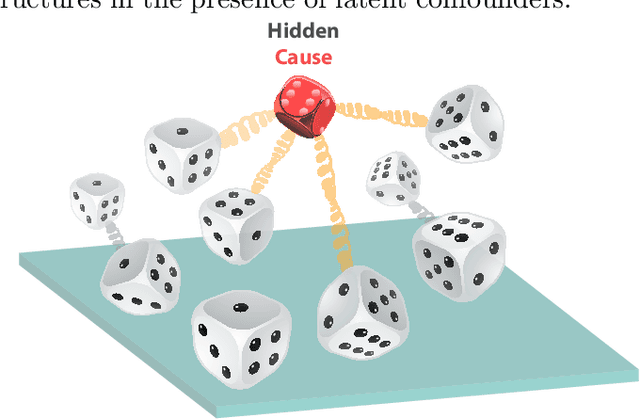

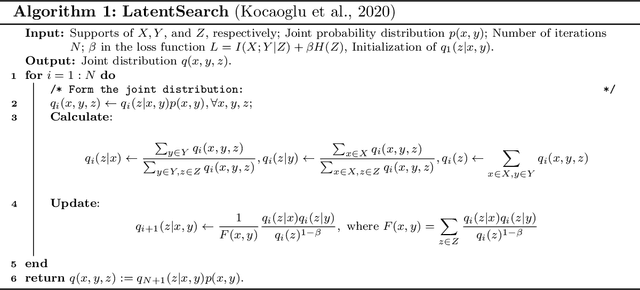
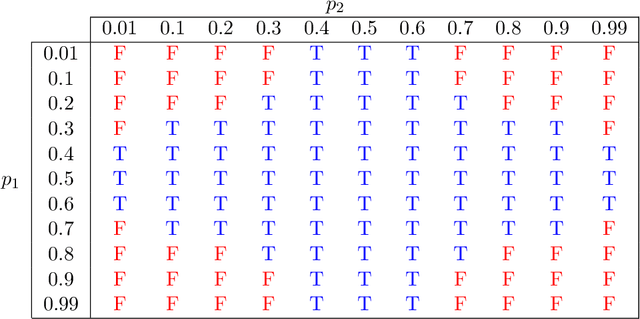
Abstract:Quantum causality is an emerging field of study which has the potential to greatly advance our understanding of quantum systems. One of the most important problems in quantum causality is linked to this prominent aphorism that states correlation does not mean causation. A direct generalization of the existing causal inference techniques to the quantum domain is not possible due to superposition and entanglement. We put forth a new theoretical framework for merging quantum information science and causal inference by exploiting entropic principles. For this purpose, we leverage the concept of conditional density matrices to develop a scalable algorithmic approach for inferring causality in the presence of latent confounders (common causes) in quantum systems. We apply our proposed framework to an experimentally relevant scenario of identifying message senders on quantum noisy links, where it is validated that the input before noise as a latent confounder is the cause of the noisy outputs. We also demonstrate that the proposed approach outperforms the results of classical causal inference even when the variables are classical by exploiting quantum dependence between variables through density matrices rather than joint probability distributions. Thus, the proposed approach unifies classical and quantum causal inference in a principled way. This successful inference on a synthetic quantum dataset can lay the foundations of identifying originators of malicious activity on future multi-node quantum networks.
Quantum Entropic Causal Inference
Feb 23, 2021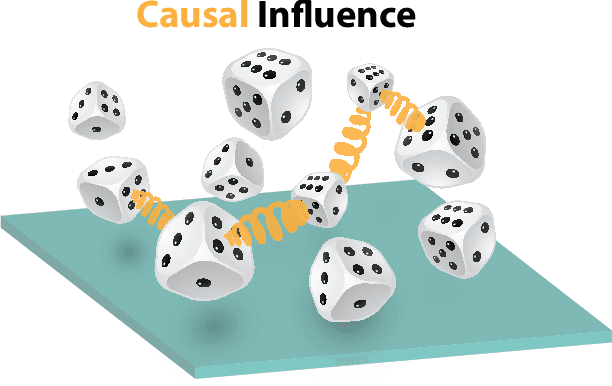
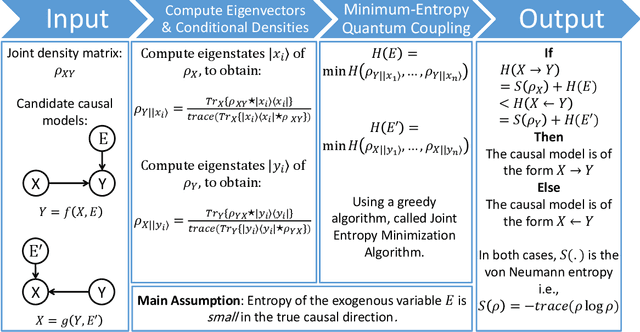

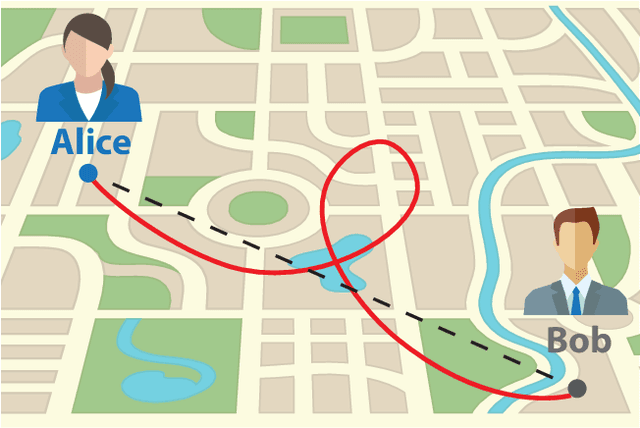
Abstract:As quantum computing and networking nodes scale-up, important open questions arise on the causal influence of various sub-systems on the total system performance. These questions are related to the tomographic reconstruction of the macroscopic wavefunction and optimizing connectivity of large engineered qubit systems, the reliable broadcasting of information across quantum networks as well as speed-up of classical causal inference algorithms on quantum computers. A direct generalization of the existing causal inference techniques to the quantum domain is not possible due to superposition and entanglement. We put forth a new theoretical framework for merging quantum information science and causal inference by exploiting entropic principles. First, we build the fundamental connection between the celebrated quantum marginal problem and entropic causal inference. Second, inspired by the definition of geometric quantum discord, we fill the gap between classical conditional probabilities and quantum conditional density matrices. These fundamental theoretical advances are exploited to develop a scalable algorithmic approach for quantum entropic causal inference. We apply our proposed framework to an experimentally relevant scenario of identifying message senders on quantum noisy links. This successful inference on a synthetic quantum dataset can lay the foundations of identifying originators of malicious activity on future multi-node quantum networks. We unify classical and quantum causal inference in a principled way paving the way for future applications in quantum computing and networking.
 Add to Chrome
Add to Chrome Add to Firefox
Add to Firefox Add to Edge
Add to Edge